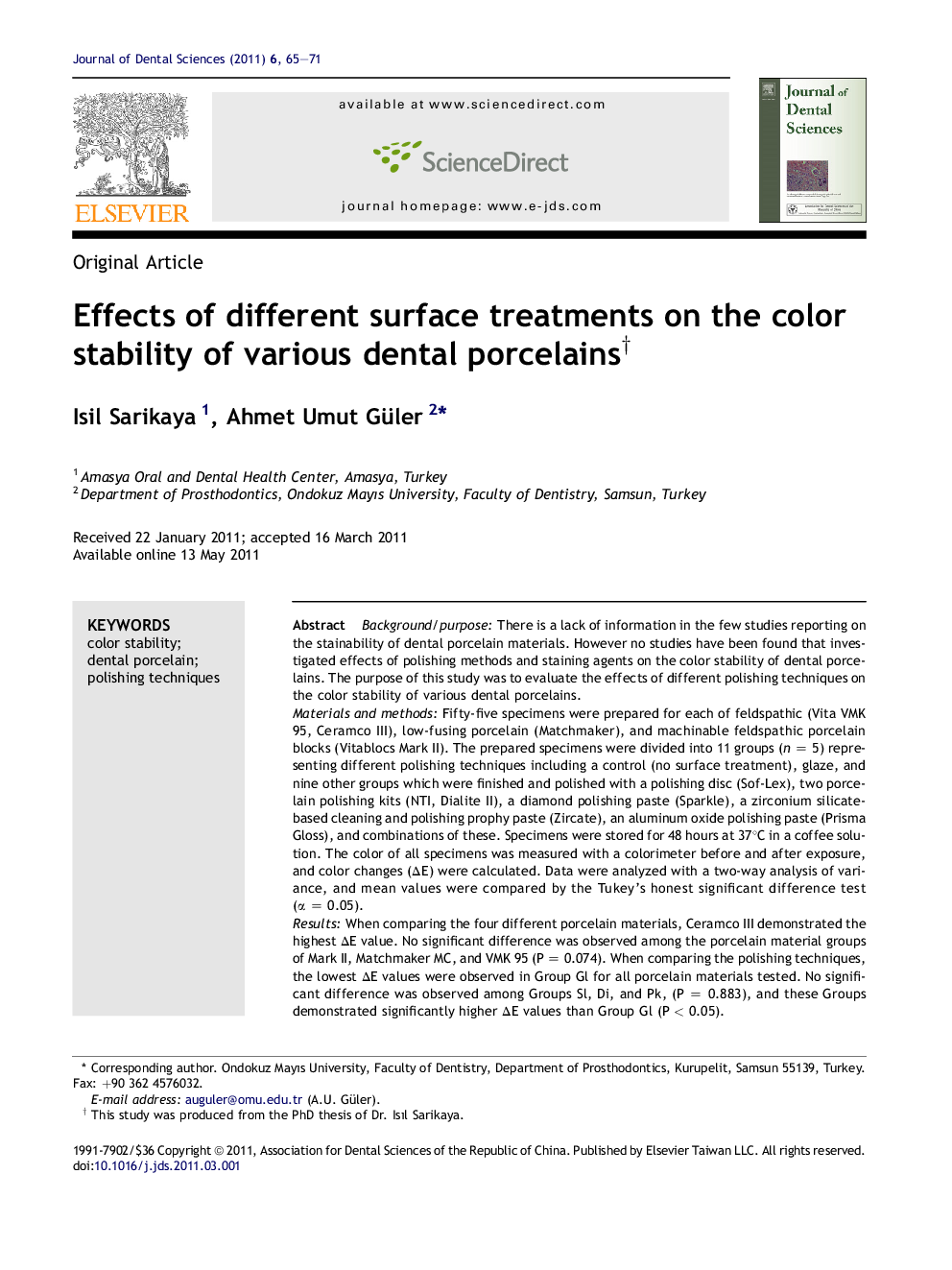| کد مقاله | کد نشریه | سال انتشار | مقاله انگلیسی | نسخه تمام متن |
|---|---|---|---|---|
| 3144814 | 1196997 | 2011 | 7 صفحه PDF | دانلود رایگان |

Background/purposeThere is a lack of information in the few studies reporting on the stainability of dental porcelain materials. However no studies have been found that investigated effects of polishing methods and staining agents on the color stability of dental porcelains. The purpose of this study was to evaluate the effects of different polishing techniques on the color stability of various dental porcelains.Materials and methodsFifty-five specimens were prepared for each of feldspathic (Vita VMK 95, Ceramco III), low-fusing porcelain (Matchmaker), and machinable feldspathic porcelain blocks (Vitablocs Mark II). The prepared specimens were divided into 11 groups (n = 5) representing different polishing techniques including a control (no surface treatment), glaze, and nine other groups which were finished and polished with a polishing disc (Sof-Lex), two porcelain polishing kits (NTI, Dialite II), a diamond polishing paste (Sparkle), a zirconium silicate-based cleaning and polishing prophy paste (Zircate), an aluminum oxide polishing paste (Prisma Gloss), and combinations of these. Specimens were stored for 48 hours at 37°C in a coffee solution. The color of all specimens was measured with a colorimeter before and after exposure, and color changes (ΔE) were calculated. Data were analyzed with a two-way analysis of variance, and mean values were compared by the Tukey’s honest significant difference test (α = 0.05).ResultsWhen comparing the four different porcelain materials, Ceramco III demonstrated the highest ΔE value. No significant difference was observed among the porcelain material groups of Mark II, Matchmaker MC, and VMK 95 (P = 0.074). When comparing the polishing techniques, the lowest ΔE values were observed in Group Gl for all porcelain materials tested. No significant difference was observed among Groups Sl, Di, and Pk, (P = 0.883), and these Groups demonstrated significantly higher ΔE values than Group Gl (P < 0.05).ConclusionsWithin the limitations of this study, the results suggest that feldspathic and low-fusing porcelain specimens were found to be more color-stable for glazed specimens versus polished specimens regardless of whether they were stained with the coffee solution. Glazed and polished specimens with different polishing materials demonstrated that the ΔE values were at an acceptable level for all of the porcelain materials tested (1 < ΔE < 3.7).
Journal: Journal of Dental Sciences - Volume 6, Issue 2, June 2011, Pages 65–71